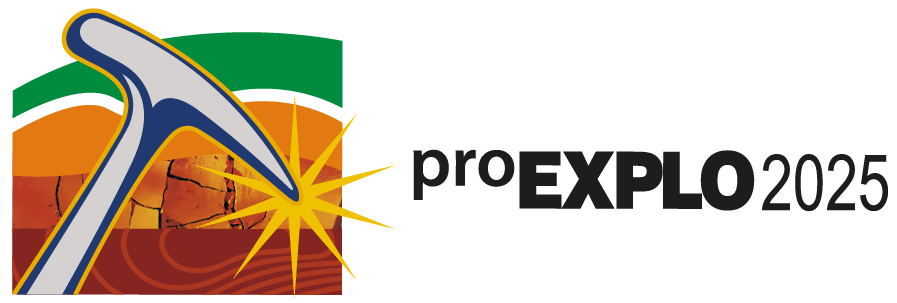INSTRUCTIONS AND EDITORIAL GUIDELINES FOR AUTHORS
The 14th International Congress of Prospectors and Explorers will organize, as a main part of the event, a program of oral and poster presentations to be held between May 5 and 7, 2025.
This document summarizes the editorial guidelines for the submission of technical papers in the form of extended abstracts.
Authors
Papers with more than one author must clearly specify who is the corresponding author, to whom the results of the evaluation will be sent, as well as any other type of communication.
Submission and acceptance of papers
Those interested in submitting their papers to proEXPLO 2025 must submit an electronic version of the extended abstract to coordtecnicaproexplo@iimp.org.pe
All technical papers received will be submitted for the evaluaton of a review committee made up of specialists appointed by the Organizing Committee for their evaluation. Their opinions and suggestions will be forwarded to the author(s) for the corresponding corrections, as well as the pertinent clarifications or disclaimers.
Works of a commercial or promotional nature, whether of products, services, or companies, will not be accepted.
After receiving the revised papers, the evaluation committee will decide on their final approval and the form of presentation (oral or poster).
Editorial guidelines for extended abstracts
Extended abstracts should be submitted in Microsoft Word format in one of the official languages of the Congress (Spanish or English). Please use the template available on our website. Extended abstracts may have a maximum length of four (4) pages and a minimum of two (2) pages, including figures, tables, and references. The required sheet size is A4.
Papers should be structured in the following order:
- Title: Arial 13 should be used.
- Author: Name and surname of the author(s) in Arial 11 (Bold), company or institution he/she represents, complete professional address and e-mail (in regular Arial 11).
- Abstract: A brief abstract in Spanish and English with a maximum of 150 words each should be included. They must be concise but informative and give a preview of the results presented in the text. For papers written in Spanish, the abstract should include the title of the paper in English. For papers written in English, it should include the title in Spanish.
- Keywords: a maximum of 5 keywords, avoiding repeating those contained in the title of the paper.
- Main text: the main text should be prepared in "single spacing", organized in two columns and in sections headed by subtitles of up to 3 hierarchical levels. Section headings (level one) should be in Arial size 12, bold font. Subsection headings (level two) should be in Arial size 11, bold font. Third-level headings should be in Arial size 11, italic font. As a general reference, it should include: an introductory paragraph, development of the main topic, summary of data, results, discussion and conclusions.
- Illustrations: illustrations include maps, graphs, tables and photos. Its proportions should be either the width of a page or the width of a column. All text inside the figure should be of sufficient size to be easily read (approximately the same size as the text in the figure caption or table heading).
- References: all bibliographical citations made in the text should appear in the list of references listed, and vice versa, in alphabetical order by authors' surnames, including all necessary information for searching. References should be included at the end of the paper. We suggest using the following formats:
- Book: Camus, F., 2003, Geología de los sistemas porfíricos en los Andes de Chile. Servicio Nacional de Geología y Minería, Chile, 267 p.
- Paper published in a conference: Loayza, D., Barreda, J., Crósta, A., Morche, W., Hedenquist, J., 2004, Late Miocene high sulphidation epithermal gold deposits of the Aruntani district, southern Peru: SEG 2004, Predictive Mineral Discovery Under Cover, Perth, Australia, Extended Abstracts, p. 212-215
- Periodical publication: Sillitoe, R.H., 1988, Epochs of intrusion-related copper mineralization in the Andes. Journal of South America Earth Sciences, v. 1, p. 89-108.
- Academic work on a book or a collective edition: Ohmoto, H., and Goldhaber, M.B., 1997, Sulfur and carbon isotopes, in Barnes, H.L., ed., Geochemistry of hydrothermal ore deposits, 3rd ed.: New York, Wiley, p. 517–611.
- Academic Thesis: Coniglio, J.E., 2006, Evolución petrológica y metalogenética del batolito Cerro Áspero en relación con el ciclo geoquímico endógeno del _úor, Sierra de Comechingones, Córdoba, Argentina. Unpublished PhD dissertation, Cordoba, Argentina, Universidad Nacional de Río Cuarto, 163 p
- URL data sources: Mosier, D.L., Singer, D.A., Moring, B.C., and Galloway, J.P., 2012, Podiform chromite deposits database and grade and tonnage models: U.S. Geological Survey Scientific Investigations Report 2012-5157, 45 p. (https://pubs.usgs.gov/sir/2012/5157/sir2012-5157_text.pdf).





